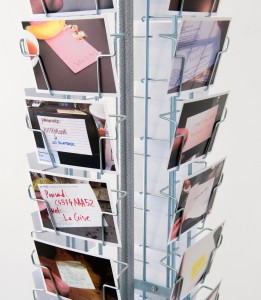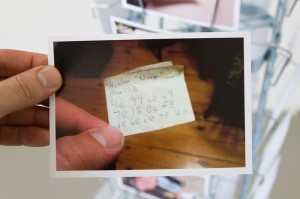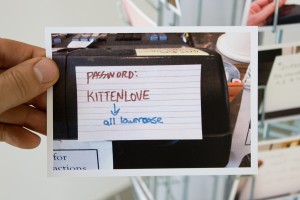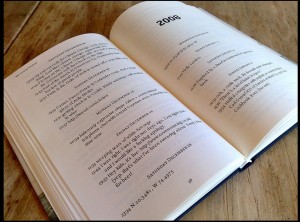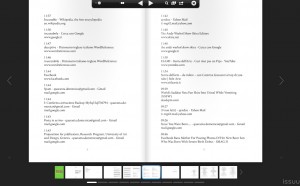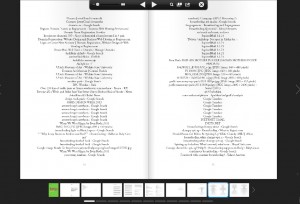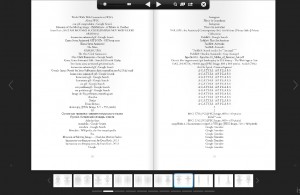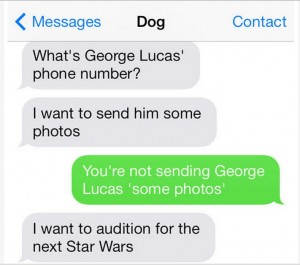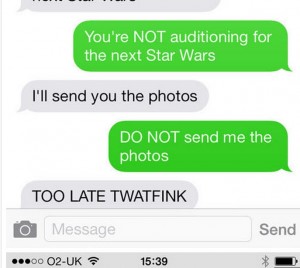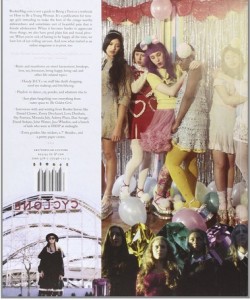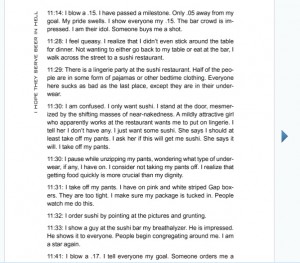From Digital to Print-E self-Fashioning
Self-fashioning online
E-Self fashioning is how people present themselves on the internet, through social media, blogs, weblogs, websites etc. “It is done through technologies of the self, which usually take the form of documents or writing. People explicitly act to fashion their identities and at the same time they are fashioned by their context.” (“Matthew Berk: Digital Self-Fashioning”, Phil Windley). It can also be done through pictures, personal photographs, videos and selfies. Instagram, Facebook, Twitter, YouTube and other similar platforms are the most popular e-self fashioning technologies nowadays. “Online people constitute themselves as assemblies of documents and other data designed for people to read and establish some relationship. The more structure in and between this content, the greater is its action potential. This structure and meta-data gives the content meaning. Content, like identity, is always plural, differential. These plural collections of content relate to different views of the identity.” (“Matthew Berk: Digital Self-Fashioning”, Phil Windley). There are several case studies mentioned in book works considering e-self fashioning; some of them were real, some of them were hoaxes. Instagram and blogs are very easy to work with and people find it tempting to create a profile or a personal blog that is real or not real, to record other people’s reactions. “Blogs represent a new “technology of the self.” They are a pure expression of content management application that have few attached metaphors and are mark-up independent. Blogs represent a tool for self- fashioning. The community is a network of interlinked content. Berk points out that other uses of the Internet have lots of metaphors (browsing, navigation, etc.) but blogs do not.” (“Matthew Berk: Digital Self-Fashioning”, Phil Windley). Angeliki Avgitidou is a Greek artist who is based in Britain and has written a book “Performances of the self” considering the self-portrait and the digital evolution and how these two affected each other. Her conclusion is that the modern forms of e-self fashioning-where the author/artist has the ability to search through the internet so that he/she create new ‘fictional’ characters- have big differences compared to the traditional self-portrait. In the next chapter of this proposal I will curate ten bookwork projects related to the topic of ‘E-self fashioning’. In this essay, I will present you those ten creative projects. More specifically, blogs, social media, and other web related objects and matters considering e self-fashioning that were printed as books.
“Greetings from the Internet”
This project is a post card series that Aram Bartholl collected in the past years and published in 2013. The pictures are WiFi passwords that he used during his travels in every private or public place he visited and had internet access. Many of these passwords are handwritten, printed or written on chalk boards, which made it hard to read and interpret sometimes. Bartholl comments that “Wifi passwords represent an era of the moment of connection. A moment of human factor before we slowly drift into always connected with all devices where ever we are.”(Aram Bratholl, “Greetings from the internet”). The question ‘What is the WiFi password’ will not exist anymore in a few years, because our devices will be automatically connected to it or always connected to it.
This is a book of 92 pages by Angela Genusa that includes every spam that an artist received, listed and organized.
“When Facebook becomes a book”
This Vevo video is a campaign created for Bouygues Telecom, to launch their Facebook platform. So Perfect Fools created an application that converts Facebook profiles into books so that people would not forget what they have posted in the past which is something that happens very often in social media. Moments pass and people forget about them very quickly. So now everyone can print their profiles, their favourite moments and have their very own Facebook book.
“The Tweetbook”
James Bridle filed his first two years of Twitter posts, reposts, favourites into a book. From 2007 until 2009, he archived everyday posts starting and separating each paragraph of his book with a date. He wanted to test if he can “write a traditional diary/journal retrospect.” (James Bridle, “Vanity Press Plus: The Tweetbook”). Bridle points out that in case that Twitter is replaced by some other social media platform, he would not want to lose all his Twitter treasure, that is why he will do it again and for other users too.
“Since you were born”
This book was primarily displayed as part of “Memory” at Niklas Beleinus Gallery. It is redacted by “chronological history of every website visited on the artist’s computer over a three month period beginning with the birth of his daughter Octavia (July 19, 2013). It thus belongs to the genre that once someone with a sheer fantasy and a bad taste for names called “autobotography”: it shows a portion of the artist’s life as it is preserved by bots – in this case, the “Chronology” function of the browser. A family album, a record of personal memories, and a picture of the internet at a given time, Since You Were Born is also an attempt to turn visible the invisible practice of profiling, turning it into a form – both effective and ineffective – of portraiture.” (Abstract, Evan Roth). The book is not a diary, Roth is profiling himself and builds a portrait for himself to remember what his browser history was during the first three months his daughter was born.
This is a video of Richard Mackney presenting his Instagram Book who he and his brother made as a present for his 40th birthday. His brother selected specific photos out of the 700 of Richard’s profile. While turning the pages Richard is commenting on the book and talking about it and the idea and why his brother chose those photos (family photos mostly).
“Texts from Dog”
October Jones realised he could send messages to himself, and he started to send passive-aggressive messages to himself pretending to be his bulldog. So he created his Dog and his Dog’s alter ego BatDog. He published their ‘conversations’ on his Tumblr blog and then printed them as a book. “Texts from Dog features Dog’s attempts to keep the neighborhood safe from the likes of Mr. Postman and his arch-nemesis Cat-Cat—he has managed to only smash three TVs and a patio door in the process. And in between crime fighting sprees and run-ins with the squirrel mafia, there are romantic interludes with pillows, fetch sessions gone terribly awry, and the abusive banter only a bromance between man and his text-savvy dog can spawn.” (October Jones, Book description).
“It sucked and then I cried”
Heather Armstrong is ‘mommy blogger’ that after being a very successful blogger, published this book with the ‘best offs’ of her popular blog. The book looks more like a normal book instead of a blog printed in a book.
“Rookie Yearbook One”
Rookie is a website for teenage girls and Tavi Gevinson is the editor in chief. She started blogging when she was 11 years old, about fashion, art and feminism. Things that she couldn’t find in many teenage magazines. Then she decided to print her collection of articles, interviews, photo editorials, and illustrations from Rookie online magazine.
“I Hope They Serve Beer In Hell”
Tucker Max started a blog in 2002 ‘as a dare’ so that he would write his stories about drinking and sex true adventures. So every chapter of this book is a chronicled story including alcohol and sex. In some cases Max changed the names, the places etc. to avoid been prosecuted for illegal actions. The paragraphs are short because they describe incidents and facts in different times, for example “12.18 am: I blow a .20. I AM GOD. The sushi bar erupts. Men are applauding me. Girls are pining for me. Everyone wants to talk to me. I forgive them their flaws, as they are all paying attention to me.” (Tucker Max, p. 5)
How authors and artists interpret E self-Fashioning
“L2 Literacy and the Design of the Self: A Case Study of a Teenager Writing on the Internet” by Wan Shun Eva Lam, presents a case study of a Chinese immigrant teenager who is exchanging mails with a transnational group of other teenagers of the same age on the Internet. Then the case study presents how this mailing with these teenagers affects his English. “This study develops the notion of textual identity for understanding how texts are composed and used to represent and reposition identity in the networked computer media. It also raises critical questions on literacy and cultural belonging in the present age of globalization and transborder relations.” (Wan Shun Eva Lam, Introduction)
“The Cinema of Me: The Self and Subjectivity in First Person Documentary” by Alisa Lebow, is a documentary in the forms of film and book. The artist is directing and filming herself as the subject of the documentary, she is the subject and the object at the same time. “Leading scholars and practitioners of first-person film are brought together in this groundbreaking collection to consider the theoretical, ideological, and aesthetic challenges wrought by this form of filmmaking in its diverse cultural, geographical, and political contexts.” (Alisa Lebow, Abstract). She is approaching her self-presentation in a completely different way that social media would. These kind of documentaries give a new perspective to the idea of digital self-fashioning.
Chaper 5 from “Images, the commonplace book and digital self-fashioning” by Bob Whipple’s book “Digital Self Fashioning”, argues that “The way we use, collect, and acquire digital images can be guided to some extent by an understanding of the late medieval and renaissance-through-mid-19th-century concept of the commonplace book. As these earlier texts provided their collectors ways of constructing, altering, and mediating identity, so the ways that we collect visual images in digital–visual “commonplace books” may provide ways of self-definition and self-construction.” (Bob Whipple, p. 99)
Matt Ferranto in his book “Digital self-fashioning in cyberspace: The new digital self-portrait”, introduces us to some case studies of digital self-fashioning. The first case he is arguing about is Peter Oakley who uploaded his first video on YouTube in 2006. Consequently Ferranto is explaining the digitalization of the self-portrait, the narcissism that it represents, and he is talking about the amateurs that create digital self-portraits nowadays because of the availability of media to do that. He mentions Photoshop as a digital self-fashioning technique. Later in his book he will define self-fashioning in the digital world.
Erving Goffman wrote a paper in 1959, arguing about “Presentation of self in Everyday life” and how when people enter a new circle of potential friends, partners etc. are looking for information about the ‘new’ person considering his/her social, financial, political, marital state. “Information about the individual helps to define the situation, enabling others to know in advance what he will expect of them and what they may expect of him. Informed in these ways, the others will know how best to act in order to call forth a desired response from him.” (Goffman, Introduction). In 2014, these information can be accessible very easily because of the internet.
Jill Walker Rettberg in his book “Blogging”, presents some the meaning of blogging, what is a blog? How to blog? Social networking and blogging, he is talking about the future of blogging and blogs as narratives. He is arguing about blogger’s idea of themselves, he is giving different examples of what bloggers can be, for example independent journalists, war journalists and if it matters when a blogger is a journalist. Also Rettberg gives two case studies of fiction and hoax bloggers, Kaycee Nicole and lonelygirl15, that frustrated people/users when they found out they were fictional characters.
In his article “Composing the Self: Of Diaries and Lifelogs”, José van Dijck, gives an example of a Dutch cartoon from a newspaper, where a man asks a woman after they had sex if she will write about it in her diary and the woman replies that she will not, but when the man falls back to sleep, the woman turns on her computer and starts typing on her webblog. Van Dijck argues that diaries are private unlike weblogs which are public. The digitalisation of the traditional diary transformed it into lifelogs that everyone can read. Van Dijck says that the diary being a private genre was a myth, because he points out that writing down your thoughts is an effort to connect to someone or something or to yourself later in your life.
In Chapter 29 “A Digital Image of the Category of the Person”, Joseph Dumit, discusses the objective self-fashioning, the PET scanning in courts and at the movies, and patients that are interested on seeing themselves in a brain mirror, the PET scan. What interests us most if the first part of this chapter about self-fashioning which debates that “objective self-fashioning calls attention to equivocal site of this production site of this production of new objective knowledge of the self.” (J. Dumit, p. 367).
In the published paper of Glynda A. Hull and Mira-Lisa Katz, “Crafting an Agentive Self: Case Studies on Digital Storytelling”, the authors after collecting data from a multi-year digital storytelling project, they “illustrate how adults and youth in one Bay Area community used the powerful multiple-media, multiple-modality literacy of digital storytelling3 to articulate pivotal moments in their lives and to reflect on life trajectories. Their stories speak to how conceptions of self have much to do with how and why we learn; the desire to acquire new skills and knowledge is inextricably linked to who we want to be as people.” (Hull and Katz, p.1)
“Self-fashioning and shape shifting: Language, Identity and social class” by J.P. Gee, is discussing the idea of self-fashioning and the role it plays in our modern society which is technologically developed. Especially teenagers have to work hard for their identity and how they will present it in the world, because fashioning yourself today is your ‘shape-shifting portfolio’ as Gee mentions. The author argues “how teenagers from different socioeconomic classes fashion themselves in and through language.” (J.P.Gee, Abstract)
Conclusion
In conclusion, nowadays printing your profile, your blog etc. is the new e self-fashioning. The most popular tools to do that are Blurb.com, where you can convert your blog or website into a book and Printstagram, where people can print their Instagram photos in a book and the Social Book, which is suitable for Facebook users who want to print their Facebook profiles. All ten creative projects introduce us to a new age of e self-fashioning. Even though the digital is imposed to the print, blog users and social media users tend to go back to the print age in these cases, to investigate themselves in the past and then print it to have a self portraiture transformed as an old narrative. However, as mentioned before in this essay, self portraits and the modern forms of e self-fashioning cannot be compared.
References
Angeliki Avgitidou, “Performances of the Self”, Digital Creativity, 2003, Academia.edu, p.131-138.
http://www.academia.edu/1489754/Performances_of_the_self
Phil Windley, “Matthew Berk: Digital Self-Fashioning”, Technometria, Tuesday 10 June 2003.
http://www.windley.com/archives/2003/06/matthew_berk_di.shtml
Hull, Glynda A., and M. Katz. “Crafting an agentive self: Case studies of digital storytelling.” Research in the Teaching of English 41.1 (2006): 43.
Lebow, Alisa, ed. “The Cinema of Me: The Self and Subjectivity in First Person Documentary.” Columbia University Press, 2012.
Lam, Wan Shun Eva. “L2 literacy and the design of the self: A case study of a teenager writing on the Internet.” Tesol Quarterly 34.3 (2000): 457-482.
http://www.jstor.org/discover/10.2307/3587739?uid=3738736&uid=2&uid=4&sid=21104112416493
Bob Whipple, “Images, the commonplace book and digital self-fashioning” by “Digital Self Fashioning”, Copy () Copy (write): 99.
http://wac.colostate.edu/books/copywrite/chapter5.pdf
Miller, Hugh. “The presentation of self in electronic life: Goffman on the Internet.” Embodied knowledge and virtual space conference. Vol. 9. 1995. Rettberg’s Blogging, “Blogs as Narratives”
http://www.dourish.com/classes/ics234cw04/miller2.pdf
Van Dijck, “Composing the Self: of Diaries and Lifelogs”, The Fibreculture Journal, University of Amsterdam.
http://three.fibreculturejournal.org/fcj-012-composing-the-self-of-diaries-and-lifelogs/
Matt Ferranto “Digital Self-Fashioning in Cyberspace: The New Digital Self-Portrait,” from A History of Visual Culture.
Dumit Joseph. “A Digital Image of the Category of Person.” A Reader in Medical Anthropology: Theoretical Trajectories, Emergent Realities (2012): 365-376.
Gee, James Paul. “Self-fashioning and shape-shifting: Language, identity, and social class.” Reconceptualizing the literacies in adolescents’ lives 2 (2006): 165-185.
Aram Bratholl, “Greetings from the internet”, 2013, Datenform.de.
http://datenform.de/greetings-from-the-internet.html
Richard Mackney, “My Instagram Book”, 25 November 2011.
http://richard.mackney.com/my-instagram-book/ https://www.youtube.com/watch?v=YDSz2hBaYF8
Perfect Fools, “When Facebook becomes a book”, 2011, Vevo.com
Evan Roth, “Since You Were Born”, 1 April 2014, Link Art Center.
http://www.linkartcenter.eu/archives/2878
Angela Genusa, “Spam Bibliography”, 18 October 2013, Cargo Collective.
http://cargocollective.com/angelagenusa/Spam-Bibliography
James Bridle, “Vanity Press Plus: The Tweetbook”, 16 March 2009, BookTwo.
http://booktwo.org/notebook/vanity-press-plus-the-tweetbook/
Heather Armstrong, “It Sucked and Then I Cried: How I Had a Baby, a Breakdown, and a Much Needed Margarita”, 23 March 2010.
October Jones, “Texts from Dog”, 6 November 2012.
Tavi Gevinson, “Rookie Yearbook One”, 2011, Rookie Mag.
